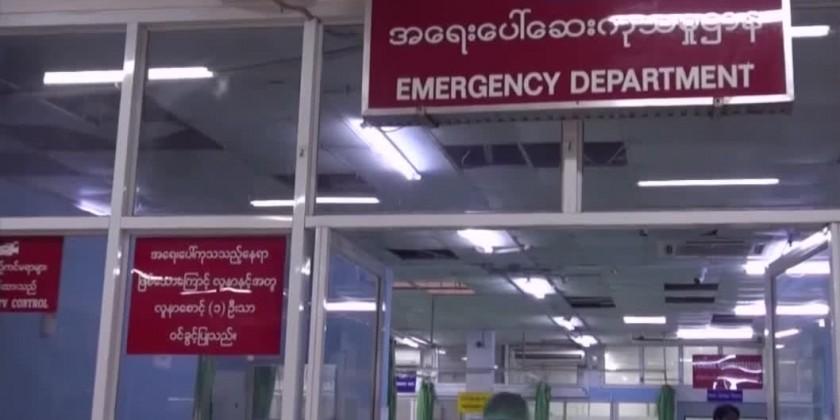What a Patient and his or her Family Members Experience at the Emergency Department
Posted_Date
Image

Body
At the phrase ‘Emergency Department’, everyone will surely feel formidable.
Patients and their family members, in particular, will be chilled to the bones. It will be repellent even to the hospital staff for its 24-hour service provision and overburdening nature. In contrast, the negative phrase ‘Emergency Department’ bears a positive sense to a patient afflicted with serious diseases or traumatic injuries and to the philanthropic hospital staff who relish saving the lives of the patients wrestling with death.
The Emergency Department is the first point of contact for many patients with a hospital. Delivering immediate, life-saving, high-quality care, it acts as an oasis for the patients experiencing life- threatening medical, surgical or orthopedic emergencies such as severe heart attack, hypertensive crisis, stroke, perforated ulcers of duodenum and stomach, perforated appendix, traumatic head injuries and fractures of bones. Moreover, it is instrumental in fighting against public health emergencies - disasters, epidemic outbreaks and mass casualty incidents.
It will be safest for a patient, if he or she is transported to the hospital in an ambulance equipped with the advanced life-support devices and staffed with a paramedic who provides pre- hospital care to the patients on the way. When a patient and his or her accompanying family members arrive at the Emergency Department, they will have to meet the hospital staff of various sorts - security staff, general workers, receptionists, medical record staff, a triage team including doctors and nurses, an emergency team comprising emergency physicians and nurses, an orthopedic team consisting of orthopedic surgeons and nurses, a medical team composed of general physicians and nurses, a surgical team formed of general surgeons and nurses, radiologists, imaging technicians and lab technicians.
On reaching the entrance to the Emergency department, the patient and his or her family members will be greeted by the security staff, who create a safe environment for all comers. Then, they will meet the general workers, who usher them into the department and take their patient in a wheel- chair or a trolley. As they take some steps into it, they will meet the receptionists, who welcome them from the reception counter, respond to their enquiries and direct them to the triage area. On the way to the triage area, throwing a sweeping glance around the department, they will find the atmosphere charged with a sense of stress and urgency: the family members of the patients waiting nervously at the waiting areas, doctors and nurses hurrying from room to room for treating the patients, some attendants comforting their patients in front of the lab and imaging rooms, and some patients being cautiously taken to the admitted wards.
When this patient and the family members get to the triage area, they will meet the triage team including doctors and nurses, who quickly assess the severity of their patient’s condition by evaluating the chief complaints, the history of the present illness, underlying diseases, vital signs measurements and then, prioritize care for him or her. Meanwhile, one of the family members will have to rush to the medical record counter to meet the medical record staff, who register the patient and issue an emergency patient record booklet. At the triage area, if the condition of the patient under examination does not require resuscitation, he or she will be sent to the medical assessment unit or the surgical observation unit for further treatment.
But, if this patient’s condition demands emergency resuscitation, he or she will be unhesitatingly taken into the resuscitation room. There, the family members of the patient will meet the emergency physicians and nurses. The emergency physicians, very important actors in saving the lives of emergency patients, will carry out all the necessary resuscitative measures including cardiopulmonary resuscitation to reverse the patient’s deteriorating condition. If the use of a ventilator or a defibrillator or both is needed, it will be upon these physicians. The emergency nurses will follow their instructions and assist them by providing the patient with the medications, intravenous infusions, oxygen therapy, using patient monitor devices and doing ECG drawings. The emergency team will coordinate and cooperate with many other specialists if necessary.
If the patient is a victim of a disaster, a road traffic accident or a mass casualty incident, the orthopedic team, in league with the emergency one, will treat his or her traumatic injuries and bone fractures. If the severity of the patient’s condition calls for an emergency operation, the surgeons on duty will perform it urgently in the operation theatre of the department. If the patient contracts the illness from an epidemic outbreak, he or she will be kept under surveillance and then provided with necessary treatment.
Now, if the condition of the patient in the emergency room has stabilized, he or she will be transferred to the medical assessment unit or the surgical observation unit. There, the family members of the patient will meet a medical team headed by general physicians or a surgical team led by general surgeons, who monitor the patient’s situation and instruct him or her to get necessary investigations. So, the patient and the family members will have to scurry to the imaging rooms, where the radiologists and the imaging technicians take and interpret the radiological images of the patient, and to the lab, where the lab technicians, under the guidance of a pathologist or a microbiologist, carry out the lab tests for him or her. Indeed, the role of investigations is of paramount importance for arriving at a confirmed diagnosis and administering the most effective treatment to a patient.
At the medical assessment unit or the surgical observation unit, if the condition of the patient being investigated and treated is improving satisfactorily, the doctors will discharge him or her home, with their guidance on the follow-up care. Now, to everyone’s delight, the patient and the family members experience a happy ending here. But, if his or her situation is stagnant or worsening, he or she will be admitted to a suitable ward in the hospital for further treatment.
If the patient is poor, the family members will have to meet the medical social staff, who can help the patient by making contact with the social welfare organizations and seeking the necessary support for him or her. Moreover, these staff will involve in the discharge planning of the patient and counsel him or her for further support after leaving the hospital.
In fact, the family members of a patient arriving at the Emergency Department are overcome with their untold social problems and immense concern for the patient. Therefore, all the staff of the department should understand their emotional outbursts and treat them kindly and forgivingly. The staff should be endowed with good public relation skill and foster social harmony with the family members. The staff should practise patience, sympathy and empathy towards them. The staff should respect the patient’s dignity and keep his or her confidentiality. The treatment team should engage the family members in making decision on how to treat the patient.
In conclusion, it is generally found that the staff of the Emergency Department in a hospital offer timely, comprehensive, efficient services to the patients as much as they can, that they can, in most cases, save the lives of the patients on death-bed, and that they can thus enhance the image of the hospital. Hence, the Emergency Department can be, undoubtedly, supposed to be a haven for a patient attending it, but not a scary place. However, it should be made more easily accessible to the patients and turned into a safer and more secure and relaxing atmosphere for them. On the other hand, there should be enough efficient staffing and up-to-date physical facilities in the Emergency Department because this can prevent the burn-out or collapse of the staff caused by overwork and, at the same time, help it operate successfully.



